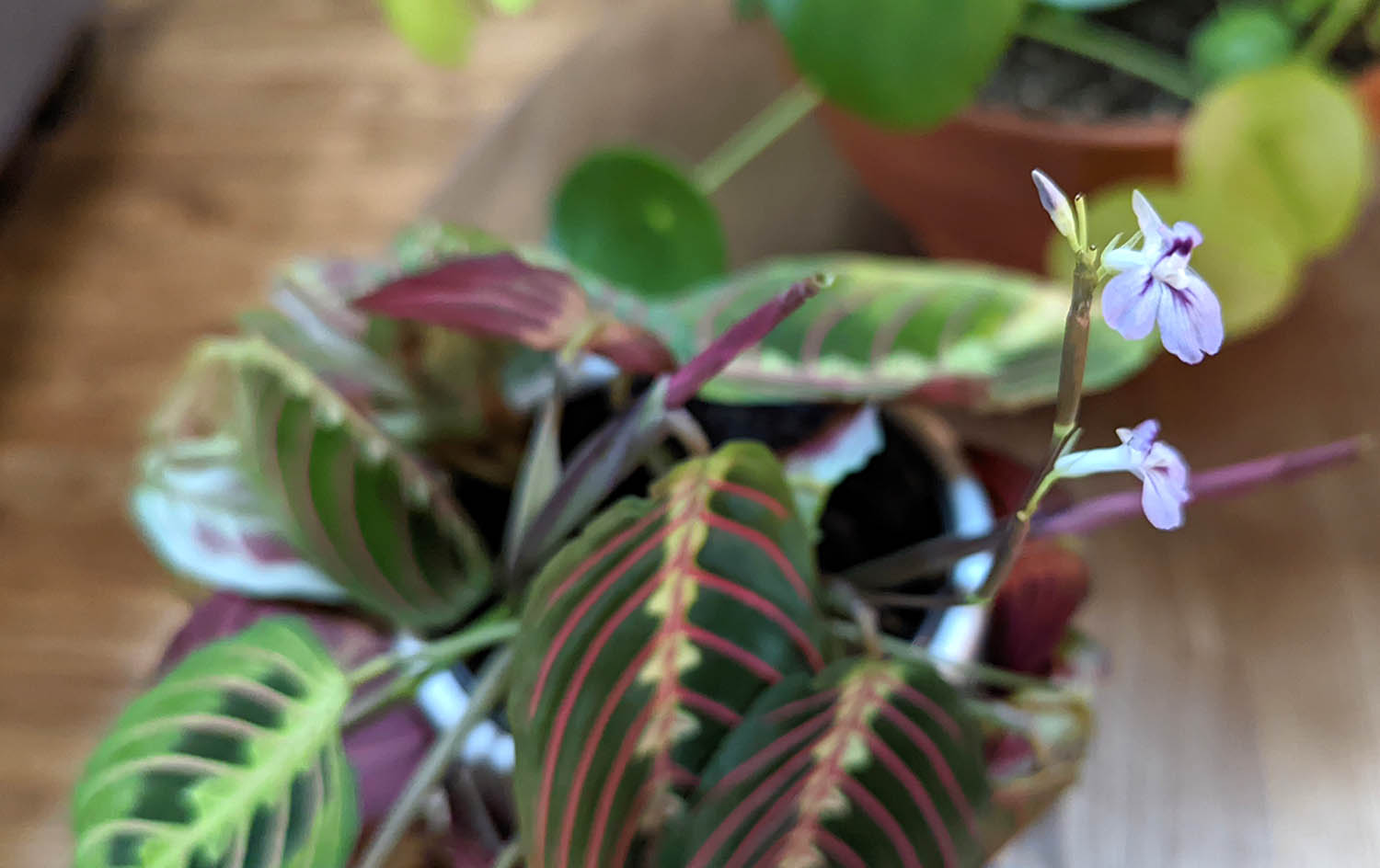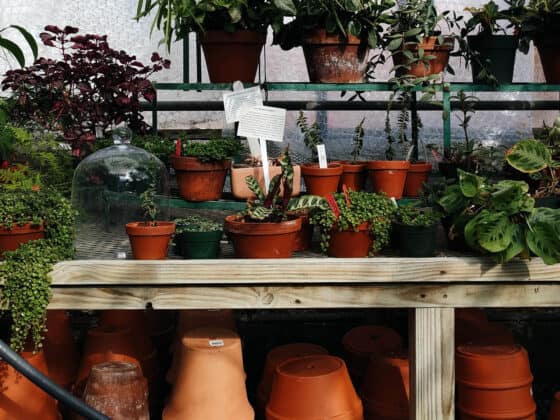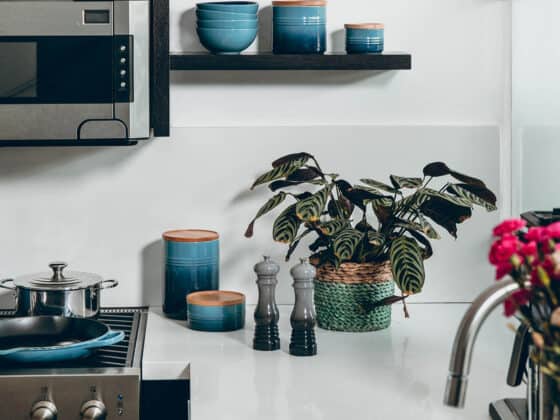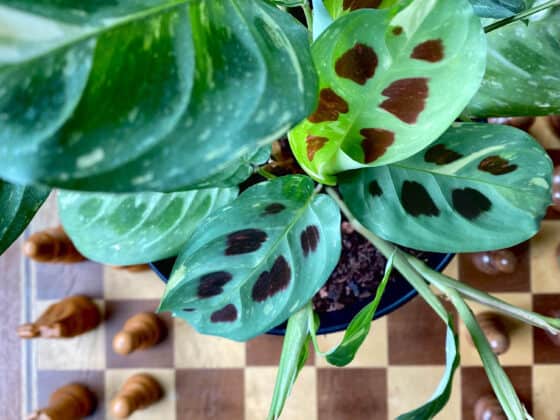The Maranta leuconeura, known commonly as the Prayer Plant, is a vividly colored tropical plant native to South America. These beautiful little plants are well loved for their decorative leaves, so it may come as a surprise that Prayer Plants can also produce flowers. But, what do these flowers look like, and what should you know about them?
Prayer Plant blooms feature small, delicate white or purple flowers. Blooming tends to occur in the spring and summer during the plant’s growing season. Blooms on an indoor Prayer Plant are rare and while they don’t hurt the Prayer Plant, they can distract it from producing new foliage and cause older growth to die back.
This article will talk a little bit about the flowers’ appearance, the pros and cons of blooming, and how to encourage your Prayer Plant to bloom. It’s ultimately up to you whether you decide to let your Prayer Plant bloom, but there are a few essential things to consider when deciding if you should.
What Do Prayer Plant Flowers Look Like?
While it is rare, Prayer Plants can produce flowers when kept indoors. When blooming, the Prayer Plant grows long, slender stalks that eventually develop flowers at the ends. The flowers can be white or purple. Each flower is bilaterally symmetrical, so they’re similar in shape to snapdragons or sweet peas.
Some species of Prayer Plant smell strongly like rosemary, so it may be difficult to smell the plant’s flowers. If you’re able to enjoy it, the flowers have a faintly sweet smell.
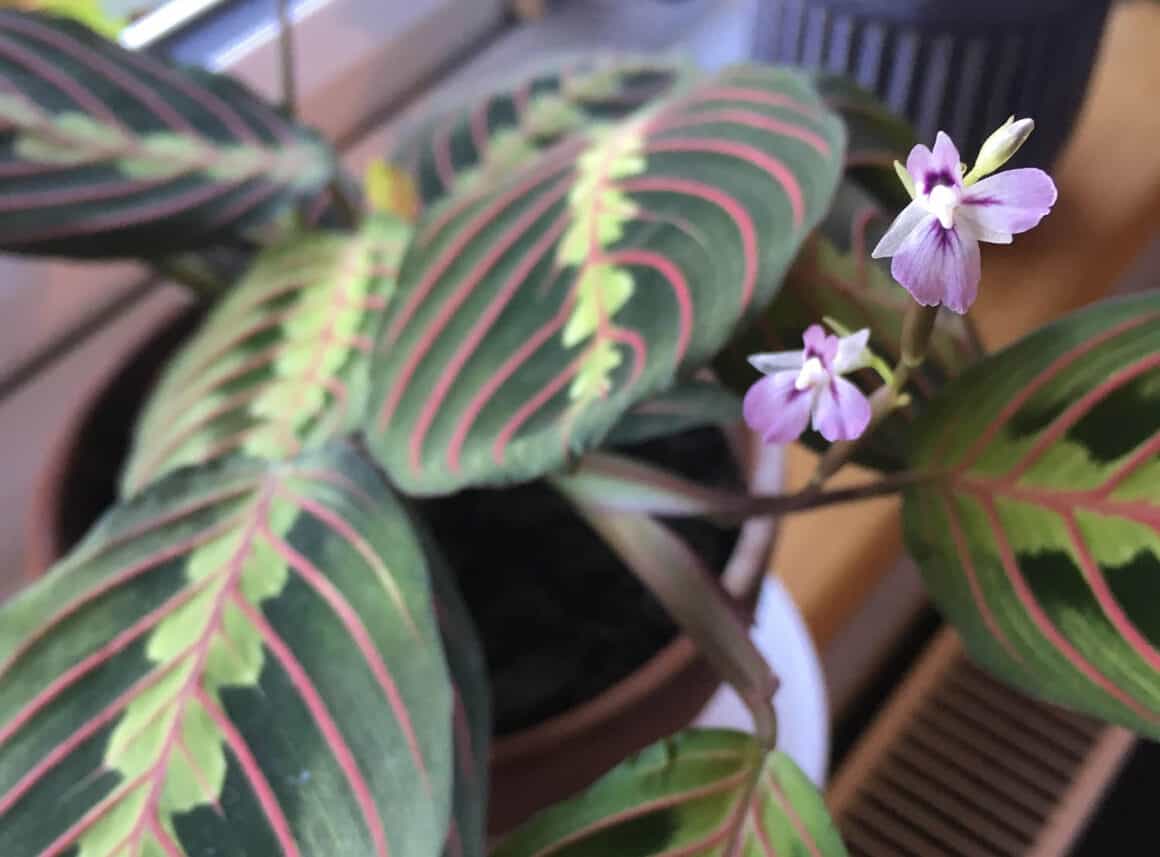
Blooms can last for several months. The flowers, however, usually die off within a few days. Any wilted flowers fall off and most of the time, the old flowers are quickly replaced by new ones.
Many plant keepers have experienced receiving a stalk or two or only a few flowers before their Prayer Plant stopped blooming. Others have described massive amounts of flowers that have to be cleaned up frequently. This often depends on the size and condition of the plant. More mature Prayer Plants tend to produce larger blooms, though this isn’t a rule.
When Do Prayer Plants Bloom?
For an indoor Prayer Plant, a rare bloom tends to happen during the spring and summer. Just like many other plants, Prayer Plants have periods of growth and dormancy. They respond to the changing seasons and produce most of their new growth in the warmer months. It isn’t uncommon, however, for Prayer Plants to bloom into fall.
It’s important to remember that a Prayer Plant won’t always flower. It’s rare for an indoor Prayer Plant to flower. People report receiving only a few flowers from their plant during the growing season, if they get any at all. If you’re fortunate enough to receive a large bloom from your Prayer Plant, it’s an indication that the plant is happy, healthy, and very well-cared for.
Should You Let Your Prayer Plant Flower?
Deciding if you should let your Prayer Plant flower is your choice. The plant won’t care either way, though it may fight you as you begin to limit its blooms. However, there are a couple of things to keep in mind.
The flowers are a beautiful rarity. Despite this, they’re easily overshadowed by the brilliant foliage, which is much brighter and prettier. When blooming, Prayer Plants focus their energy on developing flowers, which can result in older foliage dying back. For anyone that keeps Prayer Plants strictly for their leaves, this may be a problem.
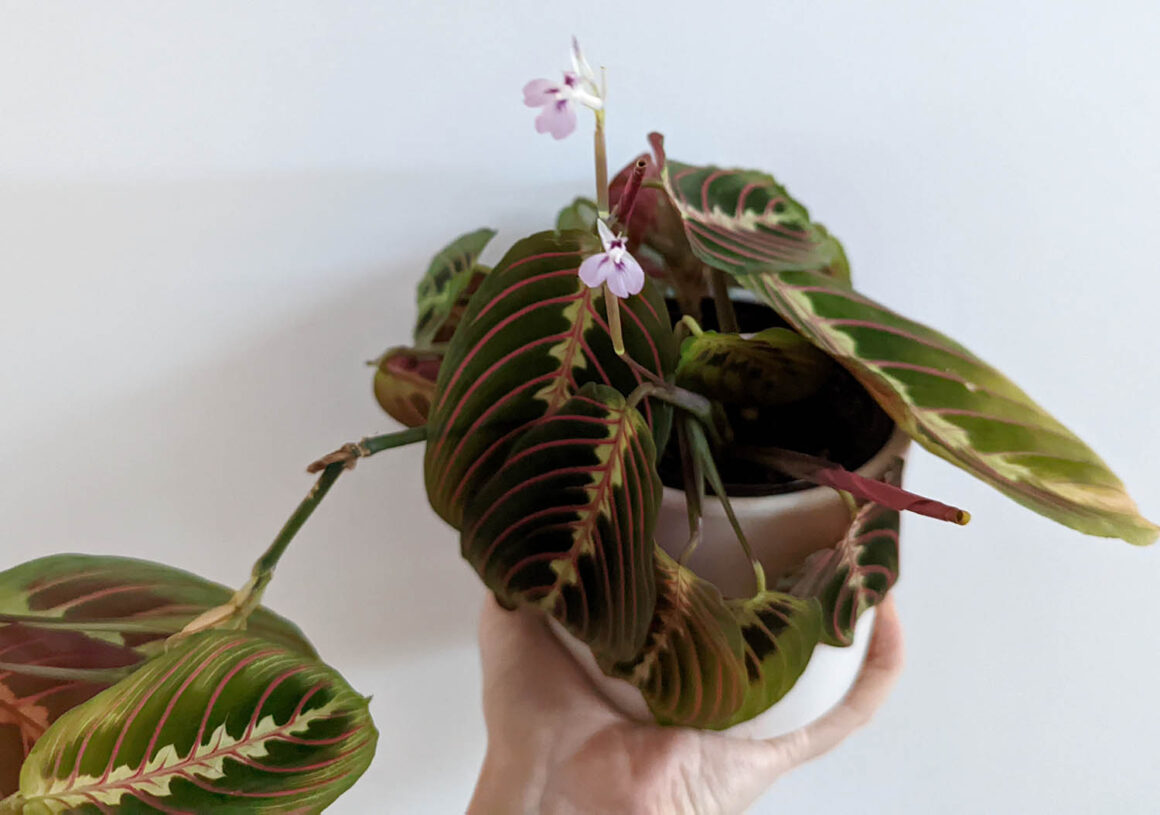
With large Prayer Plants, the volume of flowers produced can also be an issue. The flowers quickly die and grow back, so the wilted flowers can accumulate fast. Depending on your time for maintenance, this may be a hassle to keep up with.
Despite all of this, Prayer Plant blooms are gorgeous. Flowering doesn’t harm the plant, so if you aren’t concerned about foliage changes, you might enjoy the tiny flowers as they grow. Blooming is a natural process and is a good indicator that the plant is doing very well.
If you decide to prevent your Prayer Plant from blooming, all of the energy that would go to growing flowers will be diverted to growing new leaves. All you’ll need to do is carefully pinch back the stalks as they appear. Over time, the plant will stop producing new stalks. Just be sure to pinch back the stalks with clean hands.
Do Prayer Plant Flowers Produce Seeds?
The quick answer to this is yes. All flowering plants produce seeds. If you’re willing to put in the time and effort, collecting Prayer Plant seeds will allow you to grow plenty of new plants. However, the seeds are tiny, so harvesting them will be difficult. And as I’ve mentioned before, the blooms are rare, and collecting viable seeds is likely even rarer.
A better option for producing Prayer Plants is propagation by cuttings. This method of propagation is much simpler and doesn’t require the same time and commitment to collecting, drying, and eventually planting seeds. Prayer Plants also propagate quickly, so this is good for inexperienced plant owners.
Tips for Encouraging Blooms on Your Prayer Plants
If you are eager to get your Prayer Plant to bloom, there are a few ways to encourage flowering. The easiest way is to make sure that your plant has all of its needs met. Prayer Plants are indigenous to tropical regions, like Brazil, and thrive in homes that can mimic these conditions.
Ideally, a Prayer Plant prefers bright, indirect sunlight. While they can tolerate too little light, it won’t be enough to encourage the plant to bloom. On the flip side, too much sunlight can burn the leaves and decrease the leaves’ coloring. Finding the right balance is essential when it comes to encouraging a Prayer Plant to bloom.
Prayer Plants also need plenty of humidity. Like other high-humidity plants, a brightly lit bathroom is a great place to house one of these. A pebble tray is another alternative; however, humidifiers are the best option if you have the means. These devices can provide humidity for multiple plants and come in all kinds of shapes and sizes. For more information on our recommended humidifiers, read this article.
Another vital component to getting a Prayer Plant to bloom is regular fertilizing. Prayer Plants should be fertilized every two weeks during their growing periods using a diluted water-based fertilizer. Be sure that the fertilizer is diluted properly—Prayer Plants are prone to getting brown spots and splotches on their leaves if overfertilized. Not fertilizing a Prayer Plant enough can slow or completely stop the plant from developing new growth.
Putting It All Together
Deciding whether or not you should stop your Prayer Plant from flowering is entirely up to you. Just keep in mind that a bountiful bloom is an excellent sign that your Prayer Plant enjoys the care it’s getting. Plus, the flowers are extraordinary. Despite being unassuming, they are a unique contrast to the rest of the plant and worth seeing at least once.
If it isn’t for you, or your Prayer Plant’s last bloom was a mess, don’t worry and simply pinch back the new stalks. Plants are receptive, and yours will respond quickly enough once it’s figured out that you don’t want it to flower. Just give it time and make sure that it has everything it needs.
If your Prayer Plant isn’t blooming, you don’t need to worry about the plant. This is a pretty rare phenomenon. Keep caring for your plant as usual. It takes some Prayer Plants years before they’re ready to bloom if they ever do. Consistency is vital to any plant. Ensuring your Prayer Plant has its needs met and giving it enough time may result in a fantastic bloom!






